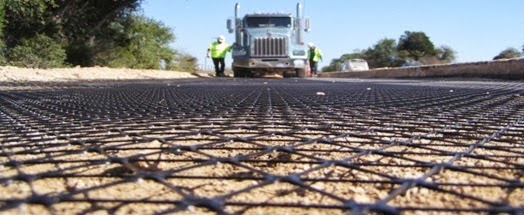Navigating the Geotextile Supply Chain: A Deep Dive into Supplier Dynamics

Table of Contents
ToggleThe construction industry relies on a complex network of suppliers to deliver essential materials, and geotextiles are no exception. As foundational components in various civil engineering projects, geotextiles play a critical role in ensuring the stability, durability, and sustainability of infrastructure. However, behind the scenes, a sophisticated supply chain exists, connecting manufacturers, distributors, and end-users in a seamless flow of materials and information. In this article, we embark on a journey through the geotextile supply chain, unraveling the intricacies of supplier dynamics and exploring the key factors that influence this essential industry.
Geotextiles: Building Blocks of Infrastructure
Before diving into the supply chain, it’s essential to understand the significance of geotextiles in construction. Geotextiles are engineered fabrics designed to perform specific functions in civil engineering projects, such as soil stabilization, erosion control, and drainage management. They come in various forms, including woven and non-woven materials, and are used in a wide range of applications, from road construction and land reclamation to environmental remediation and coastal protection.
The Geotextile Supply Chain: A Multifaceted Ecosystem
The geotextile supply chain comprises multiple stakeholders, each playing a unique role in the procurement, distribution, and delivery of geotextile products. Key players in the supply chain include:
- Manufacturers: Geotextile manufacturers are responsible for producing the fabric-based materials used in construction projects. They invest in state-of-the-art manufacturing facilities and employ specialized processes to produce geotextiles with specific properties and performance characteristics.
- Suppliers/Distributors: Geotextile supplier or distributors act as intermediaries between manufacturers and end-users. They source geotextiles from multiple manufacturers and maintain inventories of various products to meet the diverse needs of their customers.
- Contractors/End-Users: Contractors and end-users are the ultimate consumers of geotextile products. They purchase geotextiles from suppliers or distributors and incorporate them into their construction projects according to design specifications and engineering requirements.
Driving Collective Impact
Recognizing that sustainability is a collective effort, geotextile suppliers collaborate with manufacturers, contractors, and industry stakeholders to drive meaningful change. By sharing best practices, knowledge, and resources, suppliers amplify their sustainability efforts and catalyze industry-wide adoption of sustainable practices. Collaborative partnerships enable geotextile suppliers to address complex environmental challenges and drive positive impact across the construction sector.
Factors Influencing Supplier Dynamics
Several factors influence the dynamics of the geotextile supply chain, including:
- Market Demand: Fluctuations in market demand, driven by factors such as infrastructure projects, construction activity, and government regulations, can impact supplier dynamics. Suppliers must be responsive to changes in demand to ensure adequate inventory levels and timely delivery of products.
- Product Innovation: Technological advancements and product innovations in geotextile manufacturing can drive changes in supplier dynamics. Suppliers that offer cutting-edge products with enhanced performance characteristics may gain a competitive advantage in the market.
- Price Volatility: Fluctuations in raw material prices, currency exchange rates, and transportation costs can affect the pricing strategies of Geotextile supplier. Suppliers must navigate price volatility to maintain profitability while remaining competitive in the market.
- Regulatory Compliance: Compliance with industry standards, regulations, and certifications is essential for geotextile suppliers to ensure product quality, safety, and environmental sustainability. Suppliers that adhere to regulatory requirements may gain credibility and trust among contractors and end-users.
Conclusion: Navigating the Geotextile Supply Chain
In conclusion, the geotextile supply chain is a multifaceted ecosystem comprising manufacturers, suppliers, distributors, contractors, and end-users. Each stakeholder plays a critical role in ensuring the availability, quality, and performance of geotextile products in construction projects. By understanding the dynamics of the supply chain and the factors that influence supplier behavior, stakeholders can make informed decisions and collaborate effectively to drive innovation, efficiency, and sustainability in the geotextile industry. As the construction sector continues to evolve and adapt to new challenges and opportunities, the geotextile supply chain will remain a cornerstone of infrastructure development, supporting the growth and resilience of communities around the world.








